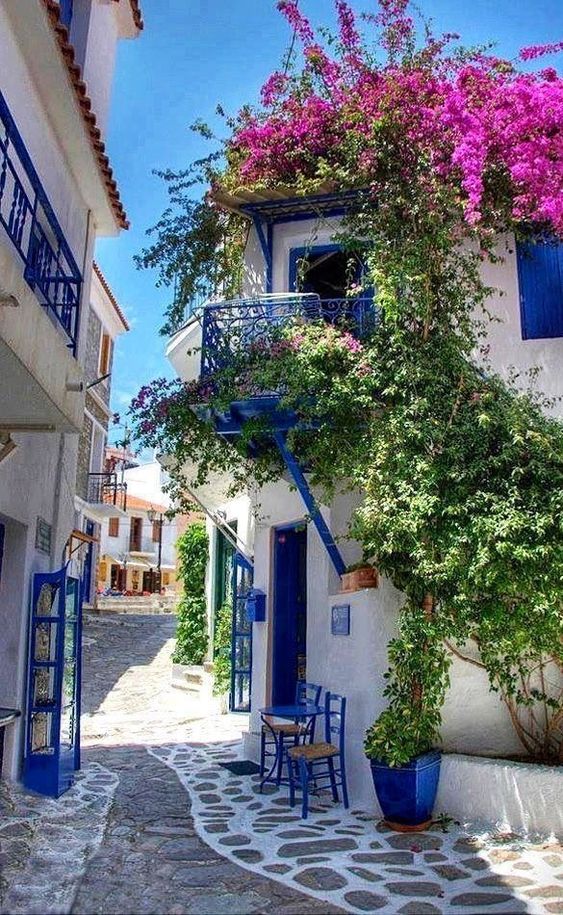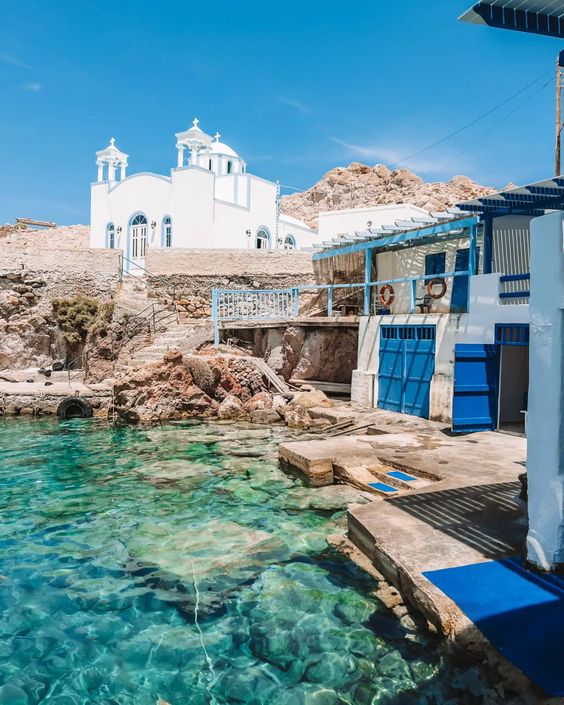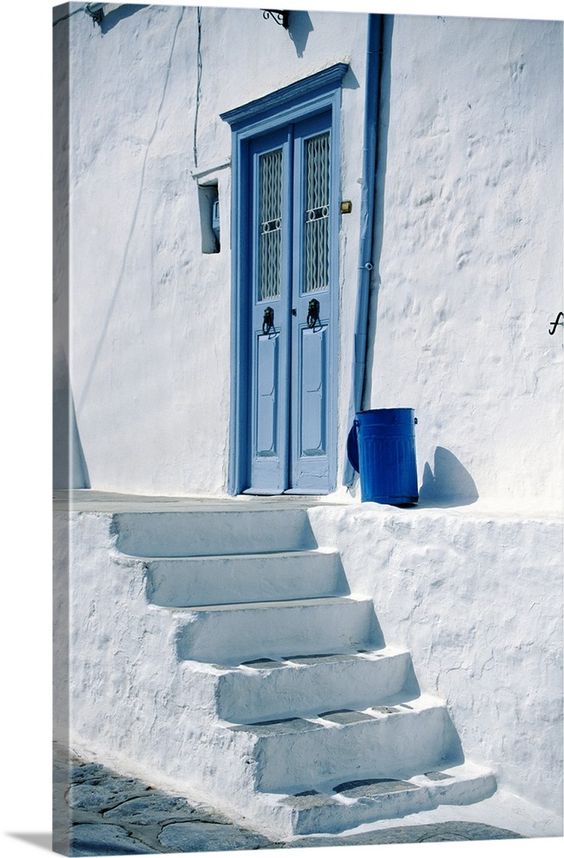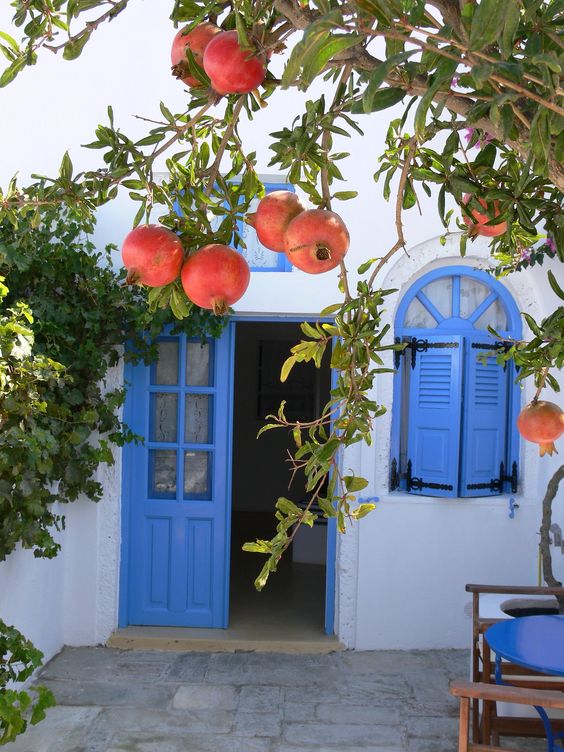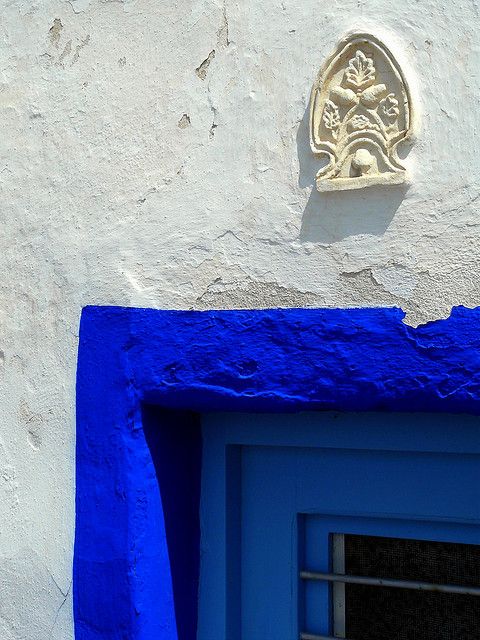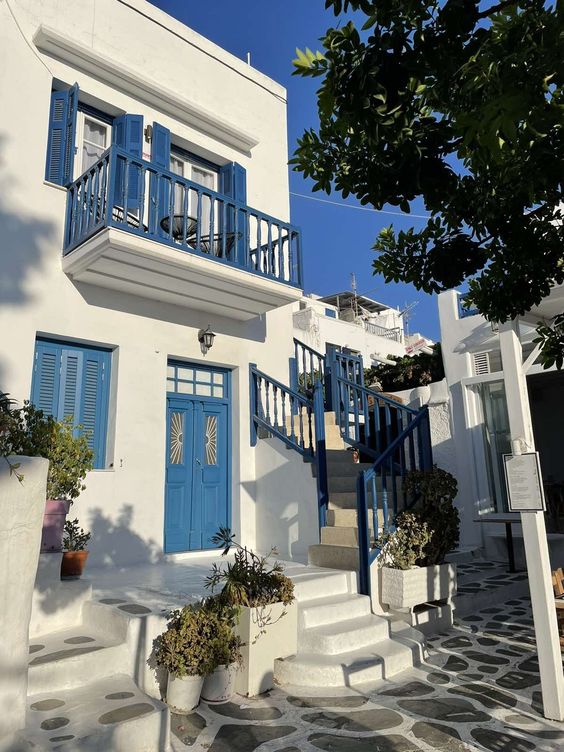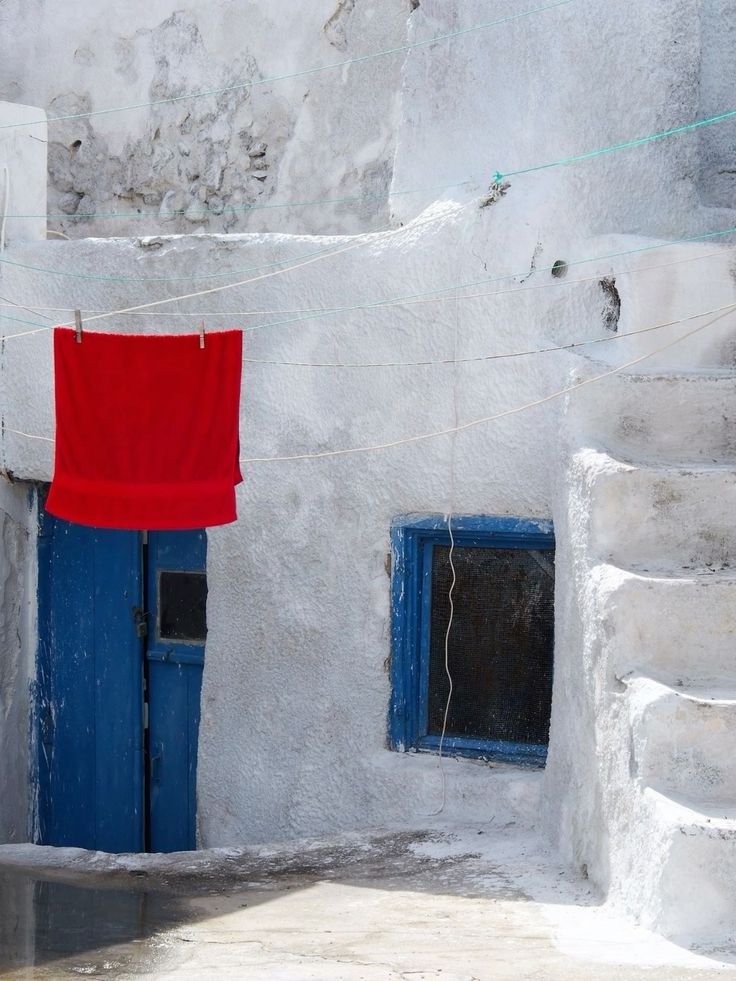Why does Greece rock blue and white?
After the military coup in ’67, Greeks were encouraged to uphold the world-renowned blue and white color scheme as a powerful symbol of national pride. Under the rule of ‘The Regime of Colonels’, this aesthetic became deeply intertwined with a sense of patriotism. The blue, reflecting the sea and sky, and the white, symbolizing the purity of Greece's fight for independence, were more than just colors—they were a rallying cry. The cross, of course, represented the nation’s deep Christian roots.
The Regime believed these colors would stoke patriotic fervor, so much so that in ’74, a short-lived law went into effect mandating that homes on Greek islands be painted in blue and white.
It’s obvious there aren’t many forests on the islands, so most of the building materials consisted of dark stone and concrete; but in that relentless Mediterranean sun, these materials absorbed heat like an oven. The practical solution? Whitewashing the buildings to reflect the heat. The blue accents—shutters, doors, and trim—were a personal touch that carried on the traditional Greek vibe. Fishermen took it further, painting their boat hulls with a stunning blue, a mix of crushed limestone and a cleaning powder called 'loulaki.' This created that now-iconic shade of blue you see on the domes of Santorini today.
*All images & copyright belong to the original owner unless otherwise stated*
The Regime believed these colors would stoke patriotic fervor, so much so that in ’74, a short-lived law went into effect mandating that homes on Greek islands be painted in blue and white.
It’s obvious there aren’t many forests on the islands, so most of the building materials consisted of dark stone and concrete; but in that relentless Mediterranean sun, these materials absorbed heat like an oven. The practical solution? Whitewashing the buildings to reflect the heat. The blue accents—shutters, doors, and trim—were a personal touch that carried on the traditional Greek vibe. Fishermen took it further, painting their boat hulls with a stunning blue, a mix of crushed limestone and a cleaning powder called 'loulaki.' This created that now-iconic shade of blue you see on the domes of Santorini today.
*All images & copyright belong to the original owner unless otherwise stated*
